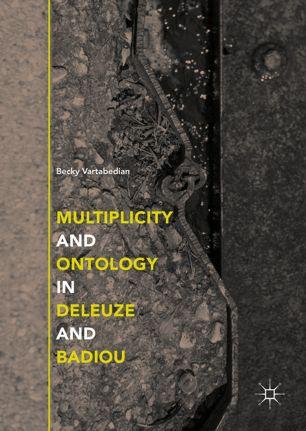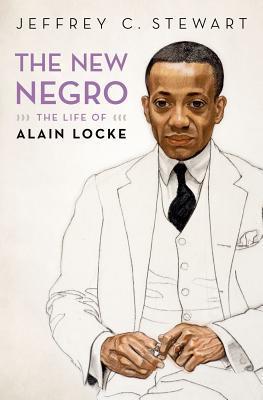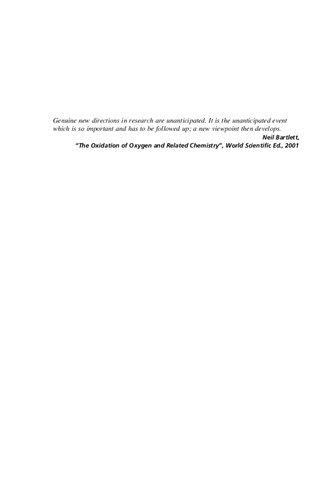A New Dawn for Politics
Alain Badiou
Translated by Robin Mackay
Originally published in French as Les Possibles matins de la politique by Alain Badiou © Librairie Arthème Fayard, 2021
This English edition © Polity Press, 2022
Polity Press 65 Bridge Street Cambridge CB2 1UR, UK
Polity Press 111 River Street Hoboken, NJ 07030, USA
All rights reserved. Except for the quotation of short passages for the purpose of criticism and review, no part of this publication may be reproduced, stored in a retrieval system or transmitted, in any form or by any means, electronic, mechanical, photocopying, recording or otherwise, without the prior permission of the publisher.
ISBN-13: 978-1-5095-5300-6 (hardback)
ISBN-13: 978-1-5095-5301-3 (paperback)
A catalogue record for this book is available from the British Library. Library of Congress Control Number: 2022935231
Typeset in 12.5 on 15 pt Adobe Garamond by Fakenham Prepress Solutions, Fakenham, Norfolk NR21 8NL Printed and bound in the UK by CPI Group (UK) Ltd, Croydon
The publisher has used its best endeavours to ensure that the URLs for external websites referred to in this book are correct and active at the time of going to press. However, the publisher has no responsibility for the websites and can make no guarantee that a site will remain live or that the content is or will remain appropriate.
Every effort has been made to trace all copyright holders, but if any have been overlooked the publisher will be pleased to include any necessary credits in any subsequent reprint or edition.
For further information on Polity, visit our website: politybooks.com
Preface
The texts in this collection were conceived, written, and delivered between 2016 and 2020, for various purposes and in various locations. Revised, and where necessary amended, here they are given a kind of new lease of life. What all of them try to do, although not necessarily in a systematic way, is to talk about the present ideological and political situation, both in France and worldwide. The aim being not just to ‘recount’ the various news stories that make the headlines, whether in print, on the airwaves or on smartphones, but to arm ourselves with a few useful notions, largely the product of the last three hundred years, in order to understand what is going on. In doing so we must also keep in
mind that the official ‘news’, a commodity placed on the market by a few billionaires, is itself part of ‘what is going on’, rather than being any aid to its comprehension.
The first part opens with some necessary general overviews. Contrary to empiricists, then, who think that the only way to understand a totality is by listing all of its elements and parts, I begin from afar, from a great distance, even though I am adamant that we can only comprehend what is going on right under our noses if we go to see it, and then only if we are active, activist even. We must be activists, but activists with a faculty of comprehension broadened and enlightened by long-term thinking. Symmetrically, contrary to dogmatists, who believe that everything depends upon what they have been taught to believe, my assertions will be guided not so much by existing states of affairs as by the gap, generally quite glaring, between the constraints imposed upon the future of societies and what could have been done, and still ought to be done, in order to overcome those constraints.
The first part of the book brings together essays that in some sense offer a ‘bird’s eye view’, operating a dialectic of different epochs
by examining what was constitutive of them, shedding light on their becomings and how they come to an end, and drawing some useful conclusions from these vicissitudes.
The second part, on the contrary, sets out from what is closest of all: those movements that have burst onto the scene, particularly in France, in recent years. It attempts to draw some lessons, both theoretical and practical, from these local adventures, in order to shed light upon what was misunderstood, to examine carefully what was proclaimed to be important, to point out what was neglected, and finally to prescribe what needs to be thought (the logic of Ideas) and done (the logic of activism) in order to bring about what I regard as, quite simply, the Good.
Alain
Badiou 28 February 2021
Part I
Structures and Notions, Becomings and Visions
The Neolithic Age, Capitalism, and Communism
Let’s start by being ambitious, in terms of both time and space. We shall go back to a few millennia before our own time and also, as is fashionable, we shall take a look at the fate of our beloved planet, revered by some contemporary believers under the name of the goddess Gaia. It has become commonplace today to announce, for various reasons, that the end is nigh for the human species as we know it. From the typically messianic perspective of a certain brand of ecology, the predatory excesses of the evil animal that is the human being will soon bring about the end of the living world. And then, from the perspective of runaway technological development we are told, in no particular
order, of the takeover of all labour by robots, the sumptuous delights of the digital realm, automated art, deadly microplastics, and the threat of superhuman intelligence. Consequently, we see the emergence of menacing categories such as transhumanism and the posthuman, or, in the other direction, a return to the animal, depending upon whether we listen to the prophecies of the tech industry or laments about the wounds inflicted on Mother Nature.
I regard all of these prophecies as so much ideological rhetoric designed to obscure the real danger facing humanity today, namely the impasse into which we are being led by globalised capitalism. It is in fact this social form, and it alone, which, wedded as it is to the pure notion of private profit, authorises the destructive exploitation of natural resources. That so many species are endangered, that the climate is still running out of control, that water is becoming a rare treasure – all of this is a by-product of the ruthless competition between predatory billionaires. And the fact that scientific development is anarchically enslaved to the imperative of producing saleable technologies has the same
origin. Ecological preaching, which, despite its prophetic excesses, is often based on convincing descriptions, is in general becoming pure propaganda, useful to states that want to show everyone how caring they are, and transnational firms that, for the greater good of their turnover, are eager to make people believe in the noble and fraternal natural purity of the goods they traffic in.
Moreover, technological fetishism and the uninterrupted succession of ‘revolutions’ in this domain – the ‘digital revolution’ being currently the most fashionable – has constantly served to convince people that we are simultaneously heading for a workless paradise of helpful robots and universal laziness, and witnessing the human intellect being overtaken by electrical ‘thought’. Today, not a magazine is published that does not present its astonished readers with the imminent ‘victory’ of artificial over natural intelligence. But in the majority of cases neither ‘nature’ nor ‘artifice’ are correctly or clearly defined.
Since the very origins of philosophy, it has often been asked what the word ‘nature’ means. It has meant the romantic reverie of sunsets, the atomic materialism of Lucretius (De natura rerum), the innermost being of all things, Spinoza’s Totality
(‘Deus sive Natura’), the objective flipside of all culture, the countryside as opposed to the suspicious artifices of the city (‘The earth does not lie’, as Marshall Pétain said), biology as opposed to physics, the scope of cosmology as opposed to the minuscule neighbourhood of our planet, invariant tradition as opposed to frenzied innovation, natural sexuality as opposed to perversion …. Today, I’m afraid, ‘nature’ refers principally to nothing much more than the peace of gardens and villages, the touristic charms of wild animals, the beach, and the mountains where you might spend a pleasant summer. So who could possibly imagine that man is responsible for this Nature – man, who even now is nothing more than a thinking flea, hopping around on a secondary planet in a medium-sized solar system on the edge of a commonplace galaxy?
Since its origins, philosophy has also thought technics, or the arts. The ancient Greeks meditated on the dialectic of technè and phusis, situating the human animal within this dialectic and thus paving the way for the idea that the human is ‘only a reed, the weakest in nature, but […] a thinking reed’, which, according to Pascal,
means: stronger than Nature, and closer to God. They long ago realised that the animal capable of mathematics would achieve great things in the material order. And are these ‘robots’ we hear so much about anything more than calculations assembled into the form of a machine, numbers crystallised into movements? They certainly count faster than we do, but it is we who designed them for precisely this task. Even if a crane can lift a huge concrete pole to a great height, it would be stupid to conclude from this that humans are incapable of doing so and that we are witnessing the birth of some muscular transhuman giant …. Similarly, counting at the speed of light is not a sign of unsurpassable ‘intelligence’. Technological transhumanism just replays the same old trope, an inexhaustible theme in horror films and science fiction, of the creator outmanoeuvred by his creature, either so as to revel in the coming of the superman, which has been overdue since Nietzsche announced it, or to become fearful and take refuge under the skirts of Gaia or Mother Nature. Let’s get things into perspective. For four or five thousand years now humanity has been organised by the triad of private
property, which concentrates enormous wealth in the hands of tiny oligarchies, the family, in which wealth is passed on via inheritance, and the state, which protects both property and family by means of armed force. It is this triad that defined the Neolithic age of our species and we are still living in that age, indeed perhaps more so than ever. Capitalism is the contemporary form of the Neolithic: its enslaving of technics to competition, profit, and the concentration of capital only brings to an apotheosis the monstrous inequalities, social absurdities, military massacres and deleterious ideologies, which throughout the historical reign of the class hierarchy have always accompanied the deployment of new technologies.
It should be clear that technical inventions were the initial conditions for the arrival of the Neolithic Age, not its result. Looking at the fate of our own animal species, we can see that sedentary agriculture, the domestication of cattle and horses, pottery, bronze, metal weapons, writing, nationhood, monumental architecture, and monotheistic religions are inventions at least as important as the aeroplane and the smartphone. What is human in history has always been
artificial by definition, otherwise the humanity we know, Neolithic humanity, would not exist, but only a humanity that was still close to the animal realm – something that did indeed continue to exist in the form of small nomadic groups for around two hundred thousand years. Fearful, obscurantist primitivism has its roots in the fallacious concept of ‘primitive communism’. Today it takes the form of a cultic belief in friendly archaic societies where babies, women, men, and old people lived fraternally along with mice, frogs, and bears. Ultimately, all of this is nothing more than ridiculous reactive propaganda, since everything points towards the fact that the societies in question were extremely violent, constantly labouring under the yoke of necessity, just struggling to survive.
Moreover, to talk today in hushed tones of the victory of the artificial over the natural, of the robot over the human, is a ridiculously regressive point of view, a real absurdity. Our reply to these terrors and prophecies should be as follows: a simple axe, or a trained horse, to say nothing of a papyrus full of signs, are already exemplary transor posthuman items; the abacus already made it
possible to calculate much faster than with the fingers of the hand.
The question of our time is certainly not that of a return to primitivism or a messianic terror in the face of the ‘ravages’ of technology, nor is it that of a morbid fascination with the science fiction of all-conquering robots. The real task before us is to make a methodical and urgent exit from the Neolithic. This millennial order, which values only competition and hierarchy and tolerates the misery of billions of human beings, must be overcome at all costs, before we witness the unleashing of more of those wars that have been the preserve of the Neolithic since its emergence, technologised conflicts in the lineage of the two World Wars of 1914–18 and 1939–45, in which tens of millions died. This time it could be many more.
The issue is not technology or nature, but the organisation of societies on a global scale. It is about insisting that a non-Neolithic social organisation is possible, meaning: no private ownership of what should be common, i.e. the production of everything necessary for human life, and everything that makes it worthwhile. No family inheritances, no concentration of wealth.
No separate state to protect the oligarchies. No hierarchical division of labour. No nations, no closed and mutually hostile identities. Collective organisation of everything pertaining to the collective interest.
All of this has a name, a fine name: communism. Capitalism is only the ultimate phase of the restrictions that the Neolithic form of society has imposed upon human life, the final stage of the Neolithic. Encore un effort, fine human animal, to break out of a condition that has seen five thousand years of inventiveness benefiting only a small handful of people. For almost two centuries, since Marx at any rate, we have known that the new age must begin, the age of unprecedented technologies for all, of work distributed equally to all, of the sharing of everything and of education that affirms the genius of all. In short, this new communism must oppose, everywhere and in all matters, the morbid survival of capitalism, this supposed ‘modernity’ of a world that in reality has already been around for five thousand years, which makes it old, far too old.
The Notion of ‘Crisis’
True and False Contradictions of the Contemporary World
A great deal is being written today, in the most servile prose, about the ‘crisis’, the ‘state of crisis’, the threat of ‘the Crisis’. The crisis is always to blame, whether it’s a hack writing to order or an exasperated protestor, the one enumerating an arsenal of measures to avoid or end this supposed ‘crisis’, the other believing that they glimpse revolution already looming on the other side of the crisis. At a fundamental level, modernity and the contemporary inevitably expose us to crises that will likely become ever more anarchic and insurmountable in the future, something the hack worries about and the leftist rejoices in. So let’s start with modernity, with the essential forms of the contemporary world.
First of all, modernity is a negative reality, for it stands for the exit from tradition. It spells the end of the old world of castes, nobility, religious obligation, initiation rites, local mythologies, the subjugation of women, the absolute power of the father over his sons, the official separation between a small number of powerful people and the despised working masses. There is no going back on this movement, which undoubtedly began in the West as early as the Renaissance, was consolidated by the Enlightenment in the eighteenth century, and has since been materially realised by the unprecedented development of techniques of production and the incessant improvement of the means of calculation, circulation, and communication.
Perhaps the most striking point to be made here is that this exit from the world of tradition, this veritable tornado, which has made its way through humanity, taking barely three centuries to sweep away forms of organisation that had lasted for millennia, occasioned a subjective crisis the causes and true extent of which we are only beginning to perceive today. One of the most obvious aspects of it is the increasing difficulty that young people face in situating themselves
within this new world without succumbing to a stark alternative: either participate in the festivities of capital or roam aimlessly, lost to an overwhelming nihilism.
This is the real crisis. It is sometimes said that its cause is the advent of financial capitalism. But in fact it should be noted first of all that this capitalism is in full global expansion, that it is doing wonderfully well. Crises and wars? They are part of its particular mode of development. These are the means, savage but necessary, by which it purges competition and makes sure that the greatest possible quantity of available capital is concentrated in the winners’ hands. All of this is governed by the most fundamental law of all: the law of the concentration of capital.
From this strictly objective point of view –that of the concentration of capital – let us recall where we stand today. Today, one per cent of the world’s population owns 46 per cent of the available capital, with 10 per cent of that group owning 86 per cent of that proportion. And then 50 per cent of the population of the world owns exactly nothing: zero per cent. Which leaves 14 per cent. Understandably, the 10 per cent who own almost everything are not at all eager to
notion of ‘crisis’
mix with those who have nothing. And, in turn, many of those who share the meagre 14 per cent left over once the rich have helped themselves are ferociously keen to hold on to what they have. This is why, so often, with the help of racism and nationalism, they throw their support behind countless repressive bulwarks against the terrible ‘threat’ they see embodied in the 50 per cent who have nothing.
All of this means that the supposedly unifying slogan of the Occupy Wall Street movement, ‘We are the 99 per cent’, rang perfectly hollow. The truth is that the so-called ‘West’ is full of people who, while not included in the 10 per cent of the ruling aristocracy, nonetheless provide globalised capitalism with its petty-bourgeois band of supporters, the so-called ‘middle classes’ without whom the ‘democratic’ order would have no chance of surviving. Which means that, far from being ‘the 99 per cent’, even symbolically, the courageous young people of Wall Street, even in regard to their origin, represented only a small handful of people, sure to fade away once the festivities of the ‘movement’ die down. Unless, of course, they create more sustained links with the real mass of those who have nothing or very little,
thus tracing a political diagonal between those of the 14 per cent, especially the intellectuals, and those of the 50 per cent, first of all workers and peasants, and then the lower orders of the middle classes, those who are poorly paid and precarious. This is an entirely feasible political path, one that was tried in the 1960s and 1970s under the auspices of Maoism. And it has been tried once again recently by the occupation movement in Tunis and Cairo, and even in Oakland, where an active link with dockworkers in the port was at least attempted. Everything, absolutely everything, depends upon the definitive revival of this alliance and its political organisation on an international scale.
However, in the extremely weakened state in which this movement finds itself today, the objective appreciable result of the exit from tradition, so long as it takes place under the auspices of the globalised formalism of capital, can be nothing other than what we have just described, namely a tiny oligarchy dictating its law not only to the overwhelming majority on the edge of mere survival, but also to the westernised, i.e. vassalised and politically sterile, middle classes.
What is going on at the social and subjective level? In 1848 Marx described it in a way that is most striking, in that it rings infinitely more true today than it did in his own times. Let us quote a few lines from this old text, which is still incredibly fresh today:
The bourgeoisie, wherever it has got the upper hand, has put an end to all feudal, patriarchal, idyllic relations. […] It has drowned the most heavenly ecstasies of religious fervour, of chivalrous enthusiasm, of philistine sentimentalism, in the icy water of egotistical calculation. It has resolved personal worth into exchange value. […] The bourgeoisie has stripped of its halo every occupation hitherto honoured and looked up to with reverent awe. It has converted the physician, the lawyer, the priest, the poet, the man of science, into its paid wage labourers.
What Marx is describing here is how the exit from tradition, in its bourgeois capitalist version, has in fact unleashed a gigantic crisis in the symbolic organisation of humanity. For thousands of years the differences internal to human life have been coded and symbolised in hierarchical form. The most important dualities – young and old,
woman and man, who is in my family and who is not, the wretched and the powerful, my professional group and other groups, foreigners and natives, heretics and the faithful, commoners and noblemen, town and country, intellectuals and manual workers – were dealt with, in language, mythologies, ideologies, and established religious moralities, through the use of ordering structures that coded the place of every person within a set of nested hierarchies. A noblewoman was inferior to her husband but superior to a common man; a rich bourgeois had to bow to a duke but his servants had to bow to him; and a Native American woman was almost nothing compared to a warrior of her tribe, but almost everything compared to a prisoner from another tribe. A poverty-stricken follower of the Catholic Church was a negligible figure in the eyes of his bishop, but could be considered a chosen one in the eyes of a Protestant heretic, just as the son of a freeman was absolutely dependent upon his father but could have as his personal slave a black man who was father to a large family.
All of this traditional symbolisation is based on a structure of order that distributes the places and consequently the relations between those
places. Now, the exit from tradition, in the form in which it is realised by capitalism as a general system of production, does not really offer any active new symbolisation, but only the brutal and independent functioning of the economy, the neutral, asymbolic reign of what Marx calls ‘the icy water of egotistical calculation’. The result is a historical crisis of symbolisation that brings about great disorientation for the youth of today.
In the face of this crisis, which, in the guise of a neutral freedom, proposes money as the only universal reference, we are led to believe that there are only two paths available today. Either the affirmation that there is and can be nothing better than this liberal and ‘democratic’ model, its freedoms constrained by the neutrality of market calculation; or the reactive desire for a return to tradition, i.e. to hierarchical symbolisation.
In my view, both paths lead to extremely dangerous dead ends, and the increasingly violent conflict between them can only draw humanity into an endless cycle of conflict. This is the whole problem of false contradictions, which serve to prevent the play of true contradiction. For the true contradiction, the one that ought to serve as a reference point for thought and











